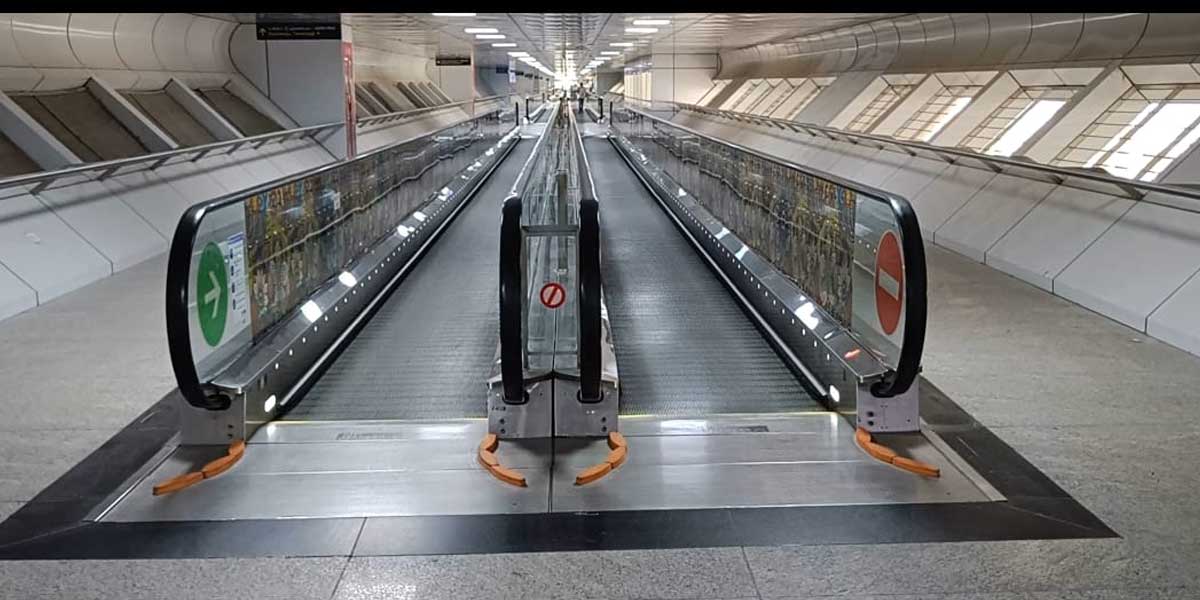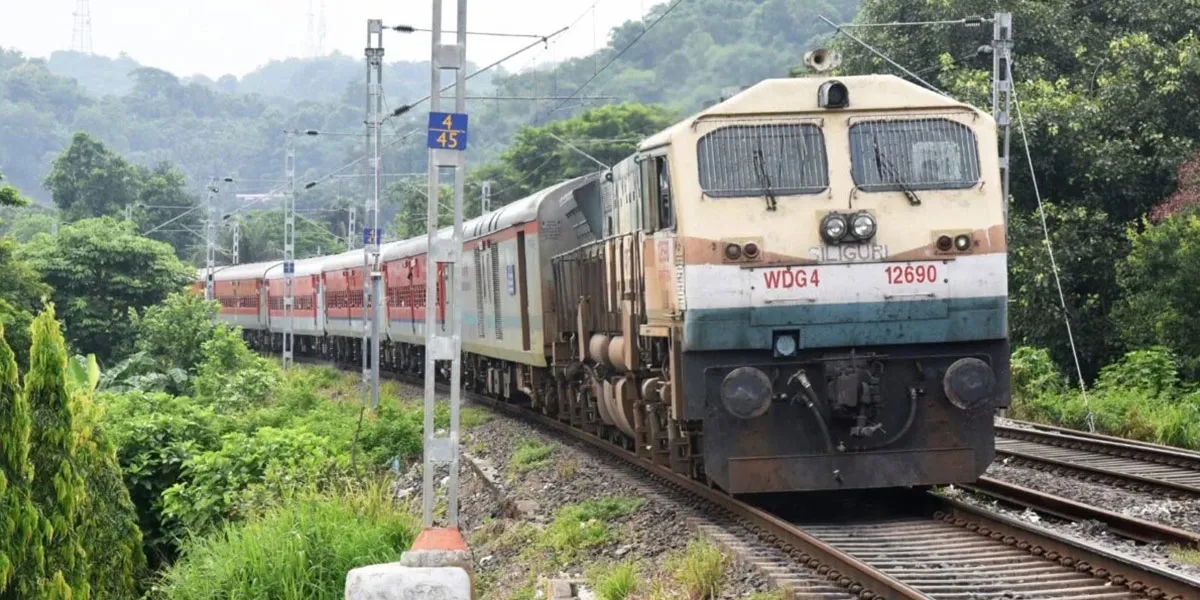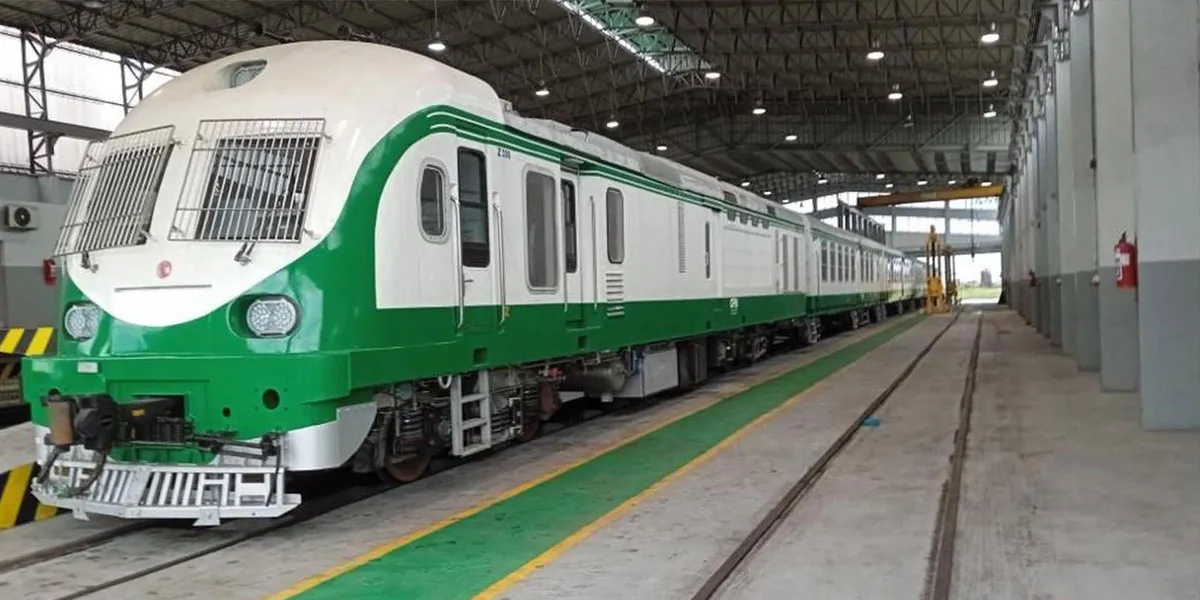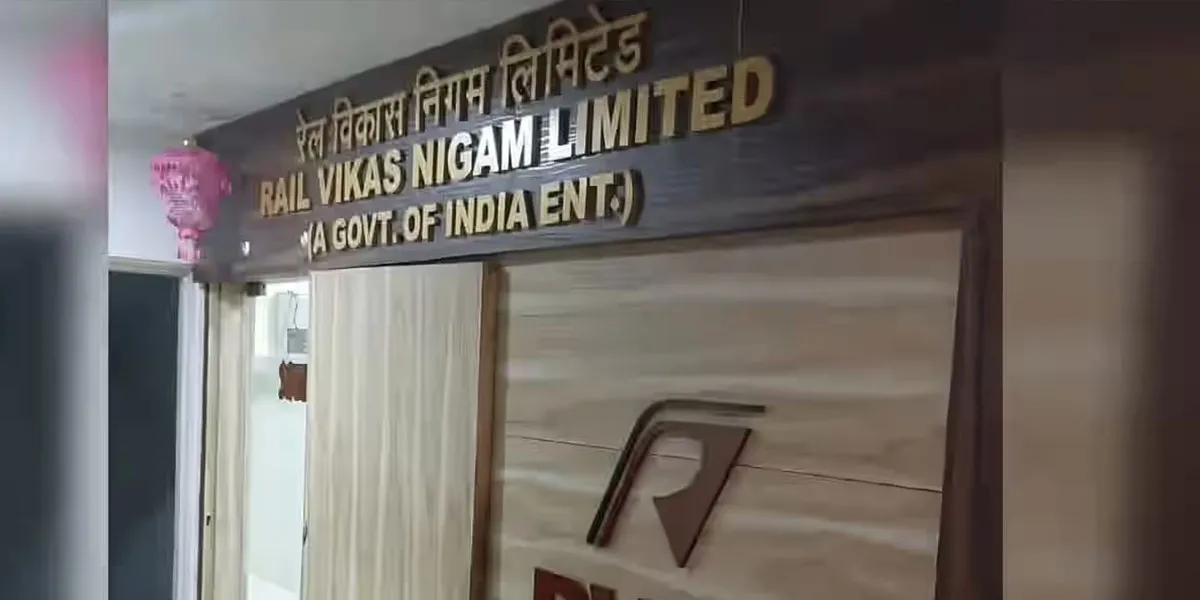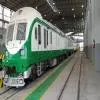CW takes a look at how – amid the pandemic – architects, builders, and developers are raising the bar in terms of technology while opting for an elevator, escalator or walkalator.
The pandemic has changed the way utilities such as elevators, escalators and walkalators are perceived – and how!
According to Shabbir Kanchwala, Senior Vice President, K Raheja Corp, the pandemic has increased people’s awareness regarding the dangers of contamination from physical contact. “A natural counter to this danger was the introduction of touchless elevator call buttons, destination dispatching systems and the installation of ultraviolet (UV) light sanitisation capabilities across projects.” The company has ramped up safety measures and modified SOPs to incorporate the new guidelines.
For elevators, touching hand operating panels and car operating panels have been the most challenging during pandemic. “However,” Dr Sharad Kumar, Airport Director, AAI, Chennai Airport, shares, “most of the lifts are equipped with pedal-type buttons to choose the respective floors. For escalators, touching the handrail was a challenging one, as the operating guidelines itself stated that passengers should hold on to the handrails as the escalator is moving in an inclined direction. In travellators/walkalators, holding the handrail may not be required as there is the option of choosing the width of the walkalator or travellator up to 1,400 mm. The speed can also be set as per requirement.”
“The post-pandemic world is a digital-first world for all of us; technologies are evolving ever since the occurrence of the new-age virus,” says Vivek Puri, Principal Partner, MAas Architects. “There is an increased focus on keeping surfaces clean and clear of contamination. Every time an elevator is called, potential virus germs are spread.” He suggests that the use of touchless technology, such as simple gestures or voice commands, would completely eliminate the need for a touchpad or button. “In coming times, one would also see customisation of smart solutions such as UV LED sanitisers on handrails of escalators. The handrails are automatically sanitised with the help of wireless technology with no energy consumption, making it an energy-efficient smart solution.”
The plan
It is important to correctly determine the number of elevators, escalators and walkalators required in a project. And an elevator consultant or manufacturer has a key role to play in the process.
“We evaluate several factors while determining the location and number of elevators/escalators and walkalators within a building,” says Amol Prabhu, Partner, Shashi Prabhu & Associates. “To start with, various users within a building and their usage requirements are identified. Their behavioural pattern, travel time and paths are mapped and based on the volume of the traffic generated, the number of these elevators and escalators are strategically placed within the building to improve the working efficiency of a building. Factors such as safety, security and segregation of traffic are also assessed. As buildings grow larger in size, and as the user groups increase in variety, the need for a transportation expert comes into play. Analysing various permutations and combinations of enabling factors becomes difficult without the use of sophisticated software.”
Here, Dr Kumar says, “The number of lifts, escalators and walkalators is decided based on the passenger flow and accumulation in one or more locations. Based on this, the traffic analysis can be done and the number of escalators and lifts can be chosen/added. Usually, escalators and lifts are the preferred medium for general passengers while lifts are used for wheelchair bound and old-age persons. For walkalators, if the horizontal distance is more than 100 m to reach the boarding gate (especially the pier kind), two walkalators of reversible type can be placed. The number of walkalators is decided based on the total distance of piers.” The consultant will be involved at the conceptual stage itself.
“Most large projects require external traffic consultants who are brought into the system to determine the requirement,” says Puri. “During the design phase, building typologies such as the capacity of the lift, lift lobby sizes and fire requirements are considered. Factors such as population calculation for different buildings based on the National Building Code and calculation for lift and escalator capacities to move that population are taken into consideration. For buildings like offices and malls, the vertical cores need to be planned way in advance.” He adds that consultants are brought in to do the basic population calculation, based on which they recommend the number and size of elevators and escalators. Additionally, project marketing teams play a major role in providing inputs based on the expected footfall of the project.
“An elevator consultant is appointed at the start of the project to undertake traffic analysis for finalisation of the lift speed, capacity and shaft size,” says Kanchwala. “Early integration into projects enables us to better design the project for optimal operation. Traffic analysis during the design finalisation process determines the number of elevators used.”
Maintenance and repair
The future of building technology is data-driven and Cloud-predictive maintenance is one of the latest trends being practised by elevator manufactures, says Puri. “Essentially, data is collected and sent to the Cloud for analysis if there are any operational glitches. The information is immediately compared to a set elevator database. If there is an indication of the failure of a component, the service engineers receive messages about the replacement or repair on their smart devices within a matter of seconds. Further, the service teams can then effectively address and rectify the issue before the elevator breaks down, thereby reducing downtime.”
With reference to Chennai Airport, Dr Kumar shares, “Maintenance is taken up on a fortnightly basis. The status of each equipment can be monitored through artificial intelligence (AI). Also, the annual preventive maintenance schedule (daily, weekly, monthly and annual checks) is drawn as per the recommendation of the OEM and is being carried out in coordination with the airport operations wing accordingly.”
And Kanchwala from K Raheja Corp says, “We have installed the highest quality of elevators and we source from reliable suppliers and vendors. We also have in place a comprehensive annual maintenance contract (AMC) with the lift vendor to ensure smooth and safe operation of the machinery.”
Safe, seamless, contactless
Builders and architects are looking at new digital capabilities to create a safe experience for the users of their projects.
“By using AI, lifts can be made touch-free, meaningfully improving passenger experience,” says Dr Kumar. “Constant sanitisation of the handrails of escalators and walkalators can be ensured by means of engaging eco-friendly methods.”
“Intuitive technologies guided by AI can help to provide a contactless building experience for users,” says Puri. “These include smart grouping and destination-based models with modern aesthetics. Smart grouping technology organises commuters by grouping them based on their floor/zone preferences; for example, passengers going to the same destination are assigned only to those elevators that serve that group of floors or zones. This results in much faster and much better organised service; i.e., in a 50-floor building, this smart grouping can reduce overall traveling time by 40 per cent compared to conventional systems. It can also reduce energy consumption by up to 27 per cent. In addition to the already existing issue of air quality index (AQI), we now have respiratory droplet transmission as a major problem of the modern-day high-rise system. Purifiers have now become a vital part of our existence and installation of vents and UV LED sanitisers on handrails that provide the right allocation and amount of inlet and outlet transmission is needed.” All the above features and many more eventually help to contribute to a healthy micro environment.
“We have already installed contactless and touchless control surfaces for the operation of elevators and gates,” shares Kanchwala. “There is a state-of-the-art safety and surveillance provision and emergency response mechanism to avert mishaps. We are also increasingly incorporating apps into our day-to-day functioning. Making information accessible and handy on one device streamlines workflows and is a necessity. To ensure the health and safety of everyone within the project, we have integrated temperature screening and monitoring into the app, which has also enabled these processes to become contactless.”
“Buttonless elevators, also known as ‘destination elevators’, which promise to speed up travel and reduce wait time have been in use for some time now,” says Prabhu. “Automatic sensing of passenger load, segregation of traffic based on defined parameters, optimising travel times, touchless entry and movement based on video sensing and minimising the use of energy are some areas that could see the intervention of technology in coming times.”
New-age features
What is the industry looking forward to in the post-pandemic world in terms of new-age features?
“Today, users are concerned about COVID-preventing features like UV sterilisation on escalator and moving walk handrails and better air quality in lift cars through improved ventilation by possibly adding additional air filters,” responds Amit Maitra, Advisor, Lerch Bates India. “Also, in most buildings, lifts are looked upon as a public space and hence one must wear a mask to enter the lift car. Further, many office buildings are only permitting up to 50 per cent occupancy in a lift car, laying emphasis on distancing. This, no doubt, means users must wait longer for lift services but it is being done in the interests of their health and safety.”
For his part, Kanchwala says, “The real-estate industry, customers and developers included, has shown an affinity towards products with anti-microbial finishes, such as paints, veneer and furniture, over the past few months. With people spending a lot more time at home, they have started to focus on overall well-being.” This is giving rise to design features such as improved ventilation and air flow inside projects, within elevators, air filtration systems and UV light sanitisation capabilities. K Raheja Corp is also aiming to deal with more local manufacturers of lifts in India, to reduce lead time.
“Materials chosen should be eco-friendly, including motors with minimum CO2 emissions, reducing the carbon footprint,” says Dr Kumar. “The focus should be on maximising renewable energy resources to operate vertical and horizontal transportation (VHT) systems. Escalators also need to be wider without compromising safety aspects. Air purification inside lifts will be a standard feature in coming years.”
“The pandemic-fuelled uncertainty has led us to question the planning and designing of buildings all together, adds Puri. “The future of our industry, like any other, is data-driven and building management will be based on the same.” He adds that intuitive technologies that provide touchless experiences, well-designed ventilation in enclosed elevators, effective crowd management with smart technologies, multiple lift cars in single shafts and UV-sanitised touchpoints are some new features that will take over in the post-COVID world.
- Shriyal SethumadhavanThe Lift Act
Several states in India do not have a defined Act for installation of elevators and escalators.
“There is a pressing need for a Lift Act to be implemented in all Indian states to ensure basic safety standards, especially with the push for affordable housing,” says Amit Maitra, Advisor, Lerch Bates India. “Also, with the emphasis on affordable housing, this segment requires a Lift Act in every state such that safety issues get covered provided there is proper monitoring and implementation of the rules. A Lift Act would mean that there is a minimum standard, such as every project having to include an emergency rescue device.”
As for how builders, developers and architects determine the number or size of elevators/escalators required based on the type of projects, whether it is a mall, hospital, high-rise, airport/metro, etc, Maitra adds, “NBC 2016 has defined the guidelines that should be followed when designing vertical transportation for any type of building. Developers and architects need to engage an independent reputable lift consultant who can guide them to provide the appropriate sizes and number of lifts or escalators in upcoming projects.”
CASE STUDY 1
Elevator/Hospital
Project details: Proposed development of Bhagwati Hospital in Borivali for Municipal Corporation of Greater Mumbai
Builder/developer: Municipal Corporation of Greater Mumbai
Architect: Shashi Prabhu & Associates
Elevator design: Machine room-less elevators
Speed: 2 m/s
USP: 20 elevators (seven passenger elevators, four staff elevators, five patient/stretcher elevators, four service elevators) strategically placed within the hospital space while achieving segregation of vertical cores to separate visitors, passengers, healthcare workers and services.
CASE STUDY 2
Walkalators/Airport
Project details: Modernisation of Chennai Airport Phase-II, Chennai/connectivity to metro rail to city side and provision of travellator at Chennai Airport, Chennai (travellators and escalators)
Description: At Chennai Airport, the walkalators are installed on the piers, which connect to the domestic and international terminals, with a direct link to the airport metro station. Both terminals have six pairs of walkalators (in total, 12) in place with a width of 1 m, length of about 33 m and speed of 0.5 m/s
Developer: RR Thulasi Builders.
Walkalator design and total numbers installed: Six pairs (12) each for the domestic and international sides; total: 24
Speed: 0.5 m/s
USP: Enhances passenger convenience and quick movement between terminals
Cost: Rs 154,002,984.
CASE STUDY 3
Elevator/Residential
Project details: Vivarea – K Raheja Corp Homes, Mumbai
Builder/developer: K Raheja Corp
Architect: Atul Desai Consultant
Elevator design and total no. installed: Four passenger and one service lift with 55 stops
Speed: 4m/s
USP: Group destination control-based system and microprocessor-based ACVVVF controller for motor.
CASE STUDY 4
Escalator/Mall
Project details: Metropolis Mall, Hisar
Project description: Metropolis Mall was conceived as the first organised retail hub in Hisar city with two lower floors of retail, a banquet hall on the third floor and offices on three floors above
Builder/developer: Simplex Alloys
Architect: Maas Architects
Escalator design: Supplied by Schindler. The ground floor has double height shops that are 6 m high and the challenge was to get the first floor activated as a retail/food hub. The placing of escalators from the ground floor to the first floor ensured complete leasing of the floor for food outlets. The escalators are also used for the 12,000 sq ft banquet hall on the second floor where large gatherings of up to 500 people take place at night time
USP: Double height traversing 6 m in a single span
Cost: Rs 500,000.
Image Source: Google Images
